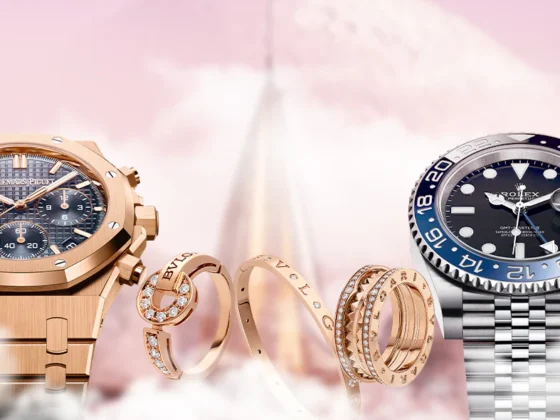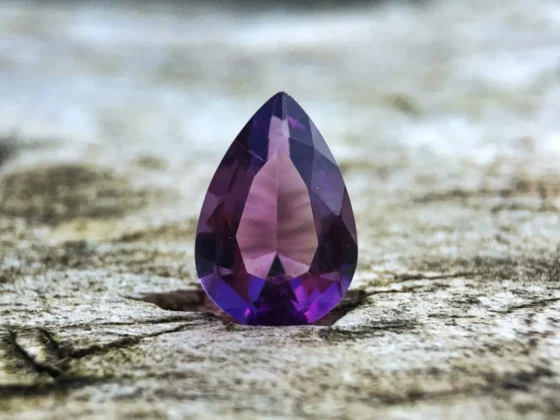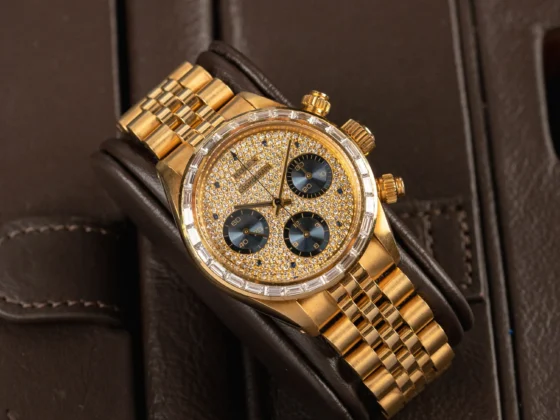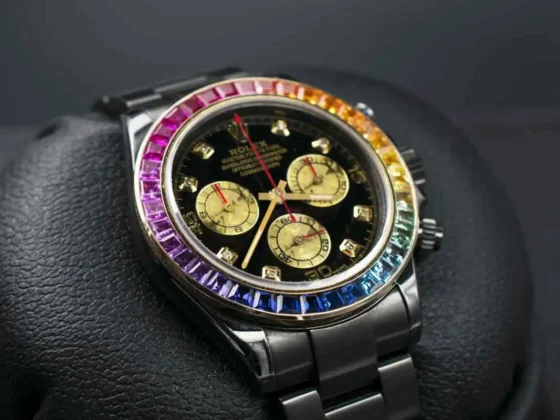Luxury goods, particularly high-end watches and fine jewelry, are not only symbols of status but also have the potential to become lucrative investments. The key to maximizing returns lies in selecting pieces with strong appreciation potential. However, identifying which luxury items will increase in value requires careful research and a keen understanding of market trends. In this article, we’ll guide you through the factors that help identify luxury goods with high investment potential and how to make informed decisions to build a profitable collection.
Why Invest in Luxury Goods?
Luxury goods have long been viewed as tangible assets that can offer significant returns over time. Unlike traditional investments, such as stocks and bonds, watches and jewelry provide the dual benefit of being wearable art and long-term financial assets. Many collectors look to luxury watches and jewelry as a hedge against inflation, offering both aesthetic enjoyment and financial security.
But not all luxury goods are created equal. Certain factors set apart the pieces that hold or grow in value over time from those that may not.
Key Factors to Spot Investment-Worthy Luxury Goods
1. Brand Reputation and Prestige
In the luxury world, brand is paramount. Iconic names such as Maison Designers, Rolex, Patek Philippe, and Cartier command global recognition and trust. These brands are synonymous with high quality, impeccable craftsmanship, and timeless design—all of which contribute to sustained demand. Watch and jewelry brands with long histories of excellence are typically a safer bet for investment.
2. Rarity and Limited Editions
Rarity is a defining factor when assessing the investment potential of luxury items. Pieces that are produced in limited numbers or belong to discontinued collections often see significant appreciation. Collectors place a premium on rarity, particularly when it comes to watches with special features, jewelry with rare gemstones, or pieces released as limited editions. For example, a Patek Philippe timepiece from a limited run or a custom-designed jewelry piece by Van Cleef & Arpels can command higher prices over time.
3. Historical or Cultural Significance
Luxury items tied to historical events, famous individuals, or cultural milestones tend to carry extra weight in the investment market. Watches or jewelry owned by celebrities or royals, or pieces associated with iconic moments, can see rapid appreciation. Likewise, a luxury watch that celebrates a particular horological innovation or a jewelry piece linked to a particular movement can add significant investment value.
4. Craftsmanship and Quality
The craftsmanship of a luxury item is a fundamental driver of its value. High-end watches with complex mechanisms or jewelry made with high-quality precious metals and gemstones have intrinsic value that contributes to their desirability. Intricate watch complications like tourbillons, minute repeaters, or perpetual calendars can make a watch considerably more valuable. Similarly, jewelry with exceptional stones—whether diamonds, emeralds, or sapphires—graded for top-tier clarity, color, and cut will hold its value over time.
5. Condition and Provenance
The condition of a luxury good plays a significant role in its investment potential. Mint-condition items or those with minimal wear are generally more desirable. Additionally, provenance—the history of ownership—can boost value. For example, a watch with documented service records, original boxes, and certificates, or a piece of jewelry with traceable ownership to a high-profile collector, will increase its resale potential.
Types of Luxury Goods with High Investment Potential
1. Iconic Watches
Certain watches have become benchmarks in the investment world due to their consistent appreciation in value. Models like the Rolex Daytona, Audemars Piguet Royal Oak, and Patek Philippe Nautilus have proven themselves time and again at auctions and among collectors. These timepieces often feature rare materials, limited production runs, or significant horological milestones, making them highly sought after.
2. High-Quality Diamonds and Gemstones
Jewelry featuring high-grade gemstones, particularly diamonds with excellent clarity, color, and carat weight, offers strong investment potential. Vintage jewelry pieces featuring rare stones or unique cuts—such as emeralds or rubies from specific mines—can also see impressive value increases, particularly when crafted by renowned houses like Cartier or Tiffany & Co.
3. Rare Vintage Jewelry
Vintage jewelry, especially from prestigious periods or eras, holds its value well and often increases over time. Pieces from the Art Deco or Victorian eras, especially those crafted by legendary jewelers, are seen as timeless. Vintage jewelry often carries both historical and artistic significance, making it appealing to investors seeking more than just aesthetic pleasure.
4. Limited Edition or Custom Creations
Custom-made jewelry or limited-edition watches have a strong appeal due to their exclusivity. Whether it’s a custom-designed bracelet by a top jewelry house or a limited-edition tourbillon watch, these items tend to attract high-net-worth individuals and seasoned collectors, driving up their value on the secondary market.
How to Make Smart Investment Decisions
1. Do Your Research
Investing in luxury goods requires understanding the current market and following trends. Regularly check auction results from renowned houses like Phillips, Sotheby’s, and Christie’s. Stay informed about which brands and models are trending in value and pay attention to shifts in the luxury market. Networking with other collectors and dealers can also provide valuable insights into emerging investment opportunities.
2. Seek Professional Appraisals
Before making an investment, it’s important to have luxury goods appraised by professionals. This not only confirms the authenticity of the item but also provides a clear understanding of its current market value. Regular appraisals are also essential for insurance purposes and to track the appreciation of your collection.
3. Invest with a Long-Term Perspective
Luxury goods are typically better suited to long-term investments. While some items may experience immediate increases in value, the true potential often unfolds over decades. Patience is key, as many luxury goods appreciate steadily over time. Avoid “flipping” and instead focus on acquiring timeless pieces that will hold their value for the long haul.
4. Buy from Reputable Dealers
Purchasing from established, reputable dealers or auction houses ensures the authenticity and quality of the items. They provide documentation and guarantees that protect your investment and reduce the risk of buying counterfeit or overpriced items.
Conclusion
Spotting luxury goods with high investment potential is a blend of knowledge, passion, and market insight. By focusing on factors like brand reputation, rarity, craftsmanship, and historical significance, you can make informed decisions that enhance your collection’s value over time. As a collector or investor, understanding these fundamentals will help you curate a portfolio of luxury watches and jewelry that not only brings you joy but also yields long-term financial rewards.





